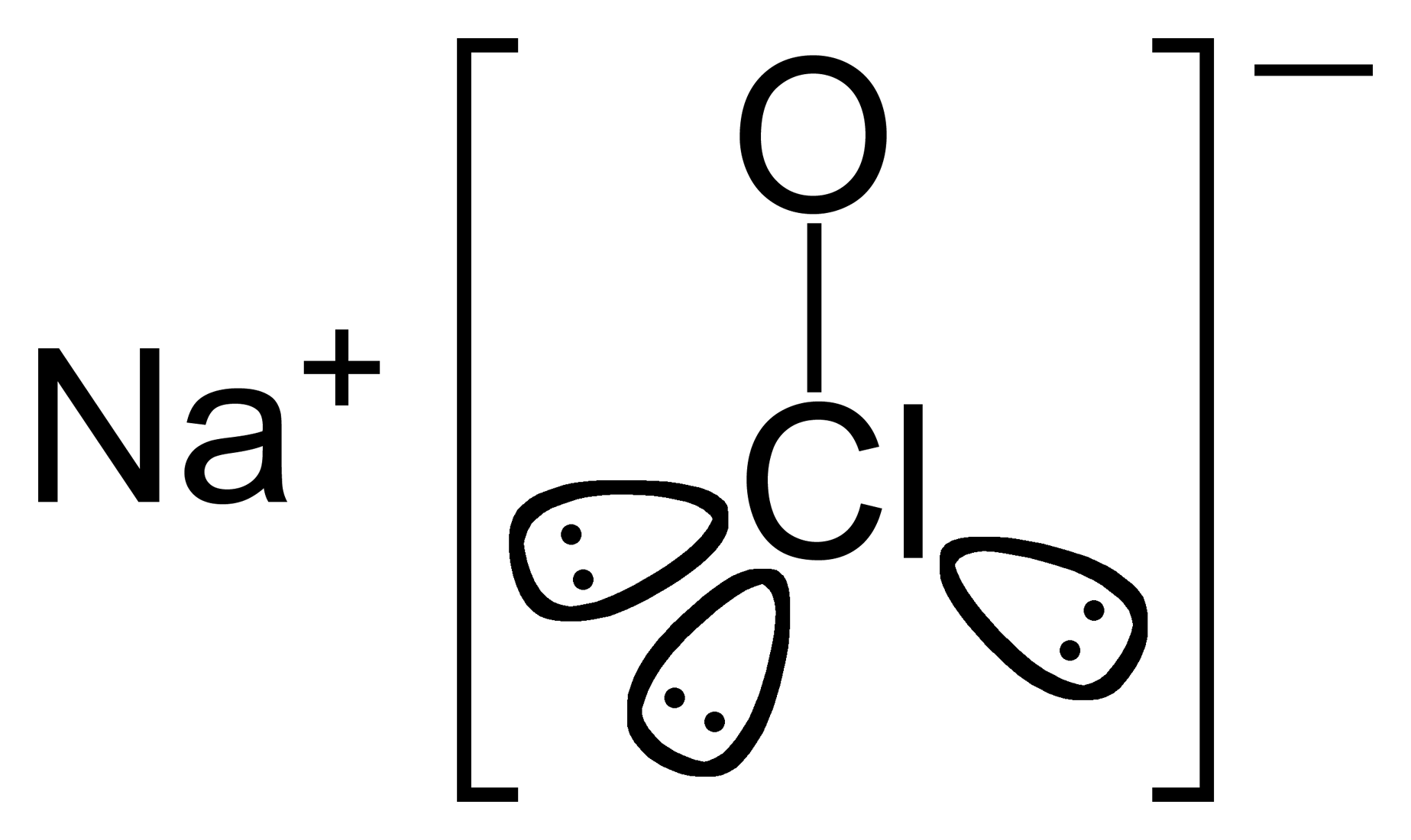
Hypochlorites are chemical compounds containing the chlorate (I) anion ([OCl]). It is a greenish – yellowish liquid commonly referred to as “Bleach”.
Sodium Hypochlorite (NaOCl) is a compound that can be effectively used for surface purification, water disinfectants (Disinfectants are microbial agents that are applied to non-living objects to destroy microorganisms, the process of which is known as disinfection), bleaching, odour removal etc. It has a relative density of one point one (1.1) [five point five percent (5.5%) water solution].
It is unstable and chlorine evaporates. It is strong oxidizer and reacts with flammable compounds however its solution is a weak base that is inflammable.
Sodium Hypochlorite is prepared by reacting dilute caustic soda solution with liquid or gaseous chlorine, accompanied by cooling. Sodium Hypochlorite can also be produced from the electrolysis of salt brine.
Nigeria has an estimated reserve of about one billion, five hundred million (1,500,000,000) tons of salt brine.Caustic soda is produced together with chlorine from the electrolysis of salt brine.
The products so produced would react together and produce sodium hypochlorite (Chlorine Bleach at twelve (12%) strength).
Sodium hypochlorite is available as solutions of varying strength. Concentrated solutions for disinfection purposes may contain ten to eighteen percent (10-18%) available chlorine; domestic and laundry bleaches typically contain three to five percent (3-5%) available chlorine; antiseptic solutions may contain only about one percent (1%) chlorine.
Sodium Hypochlorite (NaOcCl) is a pale greenish liquid also known as soda bleach or liquid bleach.Sodium hypochlorite is a basic inorganic chemical with a wide variety of uses.
It is used within industry to manufacture other substances, to treat textiles and as a powerful biocide for industrial sites (such as treatment of water for cooling systems).
The substance is used professionally to disinfect public swimming pools and public water supplies, and as a disinfectant by professional cleaners. It is used by the public as a general all-purpose disinfectant, cleaner and bleach within the home.
Some consumer formulations include a spray bottle, which can form weak sodium hypochlorite aerosols.
Globally, industrial and household applications for sodium hypochlorite are forecast to grow at a rate of one point nine percent (1.9%) annually during 2015–20. This compares with a projected growth in global demand for all disinfectants and microbials of three to five percent (3-5%) annually during 2015–20 for both household and industrial uses. Much of this growth is related to consumer concern over foodborne pathogens and outbreaks of influenza.
The leading application is municipal/industrial water treatment disinfection, which accounted for about sixty-two percent (62%) of total industrial consumption.
From the above list it can be seen that the market for sodium hypochlorite is wide, expanding and sustainable and it cuts across industries like paper, agriculture, water, food, chemical and petrochemicals, each of which has high annual demand.
The national demand estimates for sodium hypochlorite in Nigeria is in excess of five hundred thousand (500,000) tons per annum with most of the demand been met through importation.























